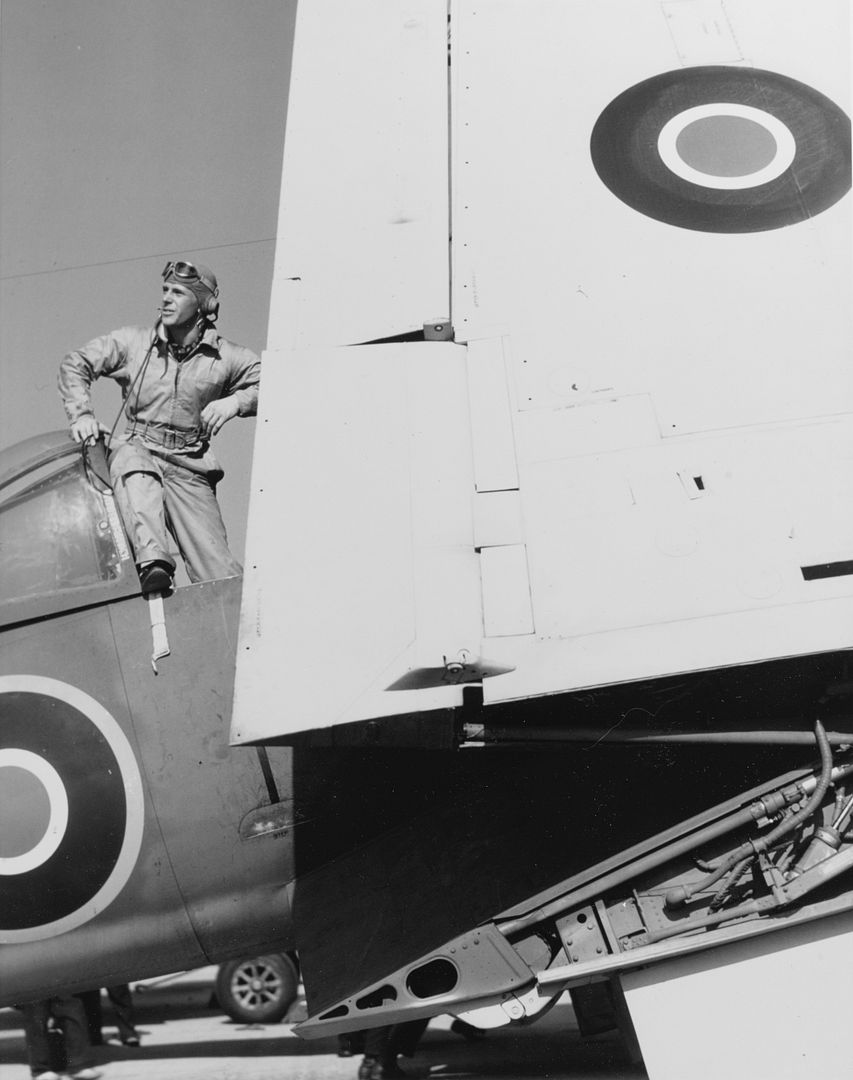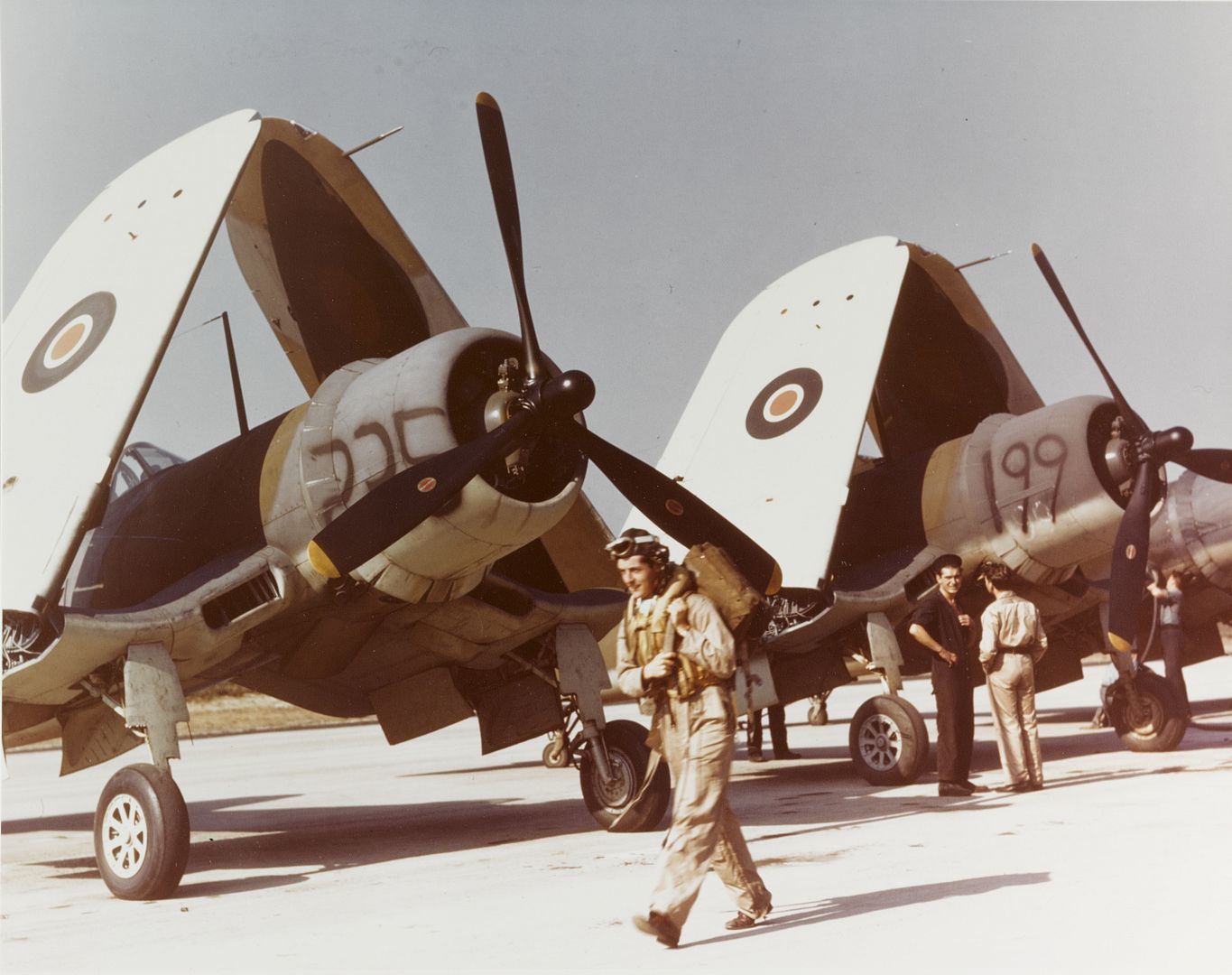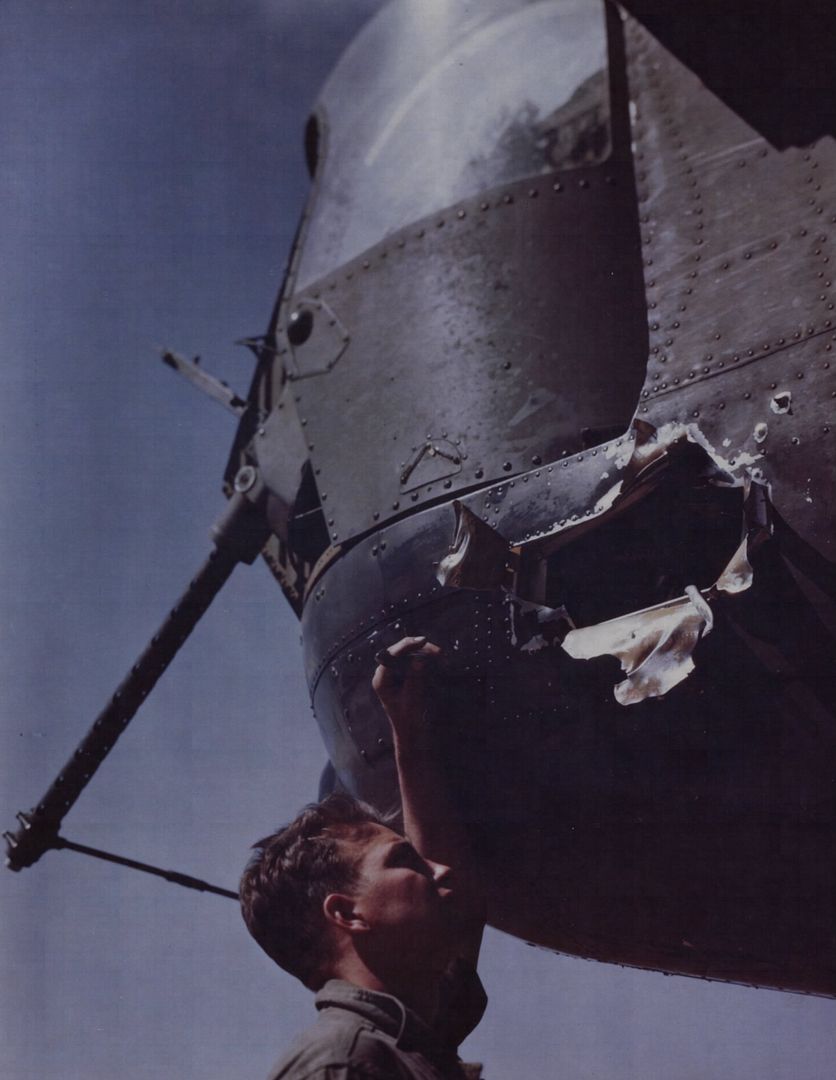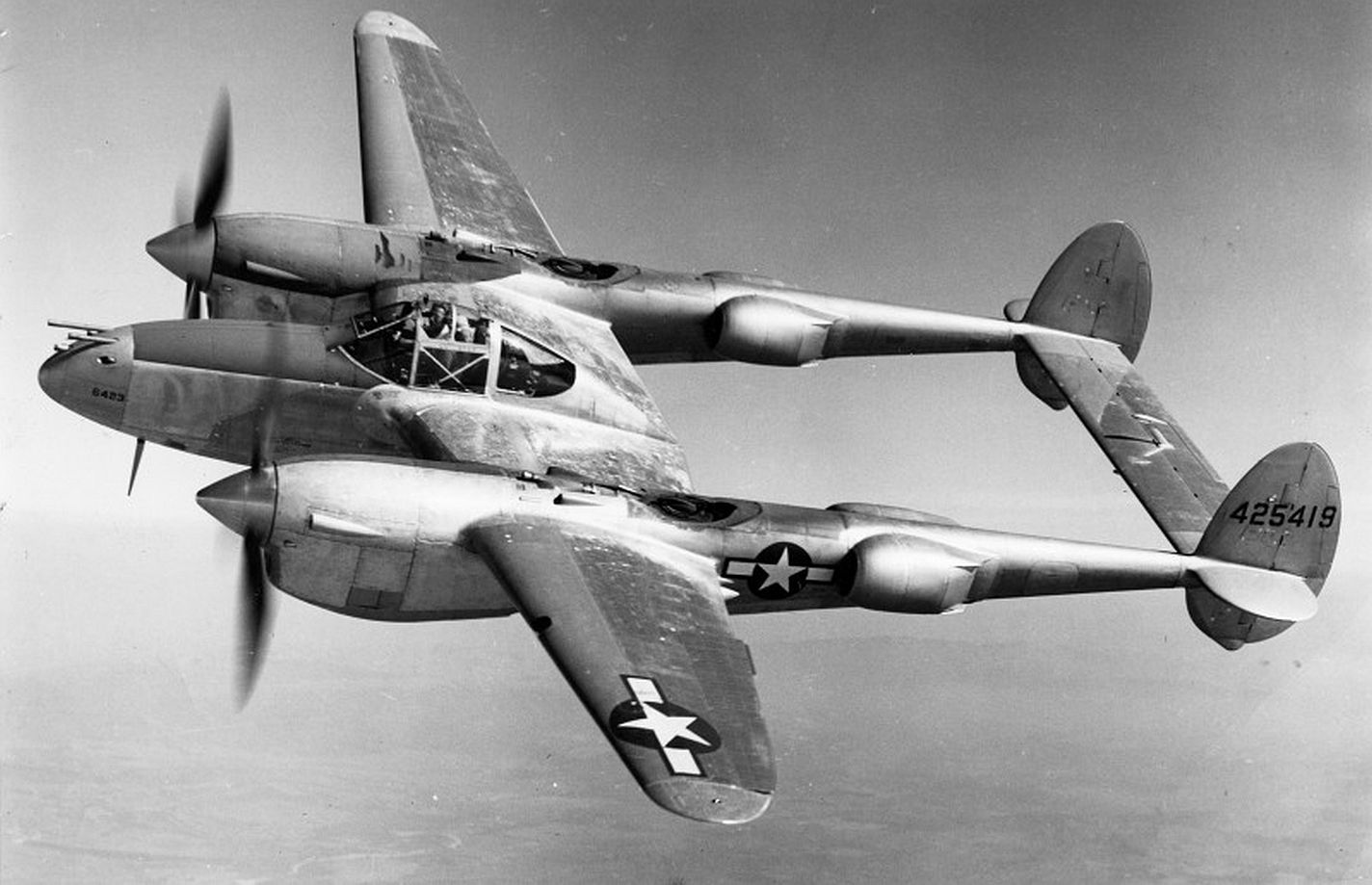Forums
- Forums
- Axis And Allies Forum
- General Discussion
- Photo of the week
Photo of the week
Post a reply
- Go to Next topic
- Go to Welcome
- Go to Introduce Yourself
- Go to General Discussion
- Go to Screenshots, Images and Videos
- Go to Off topic
- Go to Works in Progress
- Go to Skinning Tips / Tutorials
- Go to Skin Requests
- Go to IJAAF Library
- Go to Luftwaffe Library
- Go to RAF Library
- Go to USAAF / USN Library
- Go to Misc Library
- Go to The Ops Room
- Go to Made in Germany
- Go to Campaigns and Missions
- Go to Works in Progress
- Go to Juri's Air-Raid Shelter
- Go to Campaigns and Missions
- Go to Works in Progress
- Go to Skinpacks
- Go to External Projects Discussion
- Go to Books & Resources
-
 Main Admin
Main Admin -
 Main Admin
Main Admin -
 Main AdminThis weekends photo's.
Main AdminThis weekends photo's.
Spitfire FR Mk. XIVe serial no. TZ138, was purchased in April 1949 by Messrs Ken Brown and James McArthur with the intention of entering the Tinnerman Trophy Race held during the 1949 National Air Races in Cleveland, Ohio. The buyers obtained the almost new aircraft from Canadian surplus War Assets for a sum of $1,250.
The Spitfire received a civilian registration CF-GMZ on August 25, 1949. It received DOT certificate of serviceability and was approved for Class ?F? racing. The new owners moved the plane to Edmonton, Alberta, where some of the locals remember it being stuck in the corner of a hanger housing a local ice rink. The preparations were simple, comprising stripping down the airframe to natural metal and removing all unnecessary equipment including the guns. The owners also managed to receive sponsorship from Imperial Oil headquartered in Toronto. The Spitfire received a new livery with blue spinner, red and blue striping, red propeller tips and Imperial Oil logo and the name EDMONTON * CANADA (in red) ? The Crossroads of the World (in black). Blue canopy framing and the black racing number ?80? completed the finish.
1949 was the first time since 1936 that the Cleveland-based National Air Race Committee had allowed a foreign-build airplane to enter its pylon contest. Conincidentally, 1949 would also be the last National Air Race held in Cleveland. Despite attracting the huge crowds, the dangers that the event posed to the spectators and the surrounding residential area was made painfully obvious as one of a racing P-51s crashed into a house in Berea, killing the pilot and a mother and child inside.
When entering the contest, the Canadian Spitfire turned out to be the only racer retaining all its standard features. Despite this, McArthur did well arriving at the 3rd place at the average speed of 359.565 mph. The winner that year was a modified F2G Corsair piloted by ex-Navy pilot Ben McKillen, who reached a whopping 386.069 mph.
The Spitfire?s racing career ended rather abruptly on the following day. Aparently the relations between McArtur and his partners had deteriorated, and while the Spitfire team were celebrating at the awards banquet during the following night, McArtur left the airfield at 6:00am, taking off in the Spitfire with the winnings onboard, leaving no trace of his destination. The next we know about the aircraft is that it was sold in Miami, Florida to a new owner for $1,000.
TZ138 survives to this day and is based in Richmond, BC, registered as C-GSPT.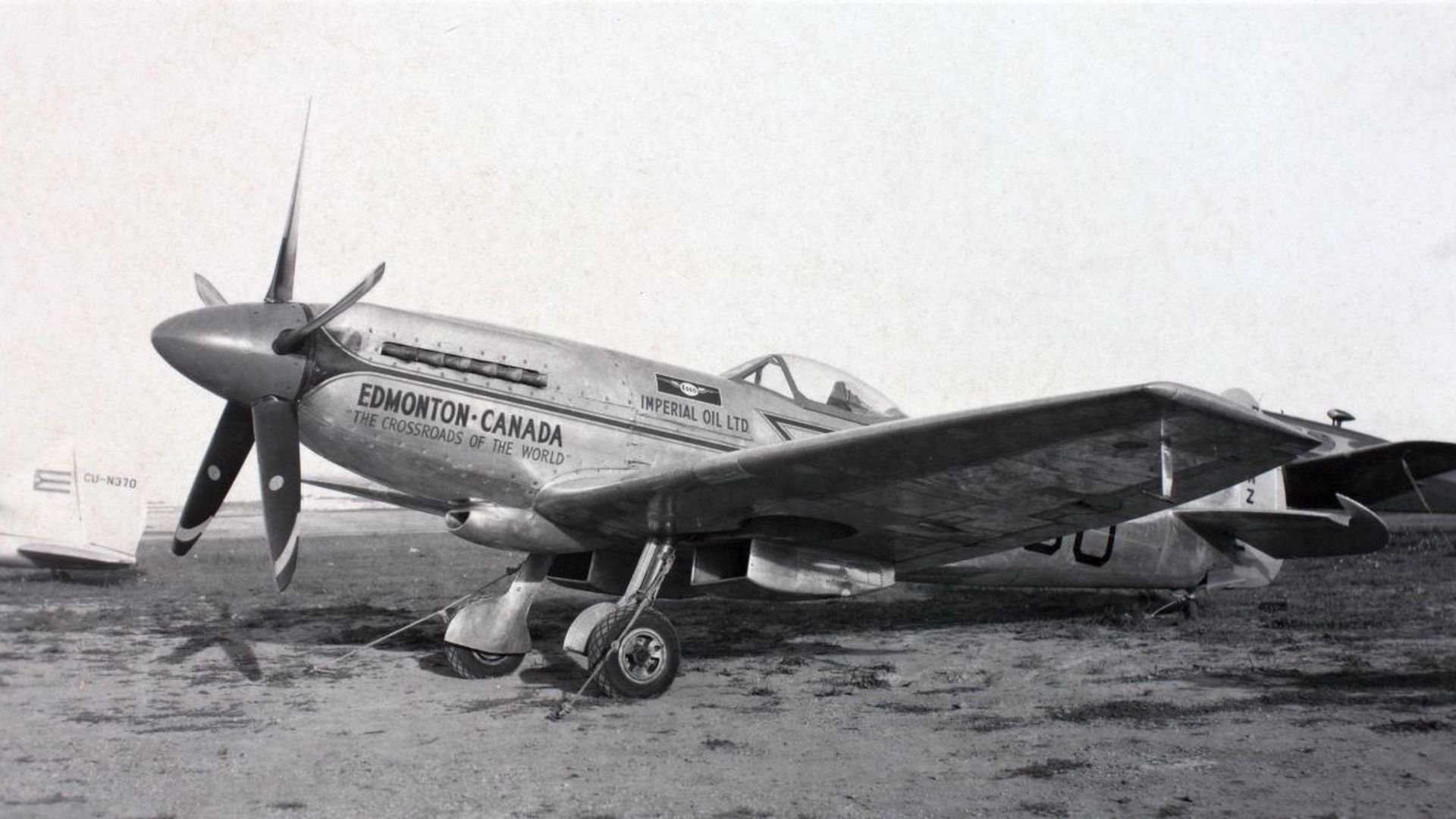
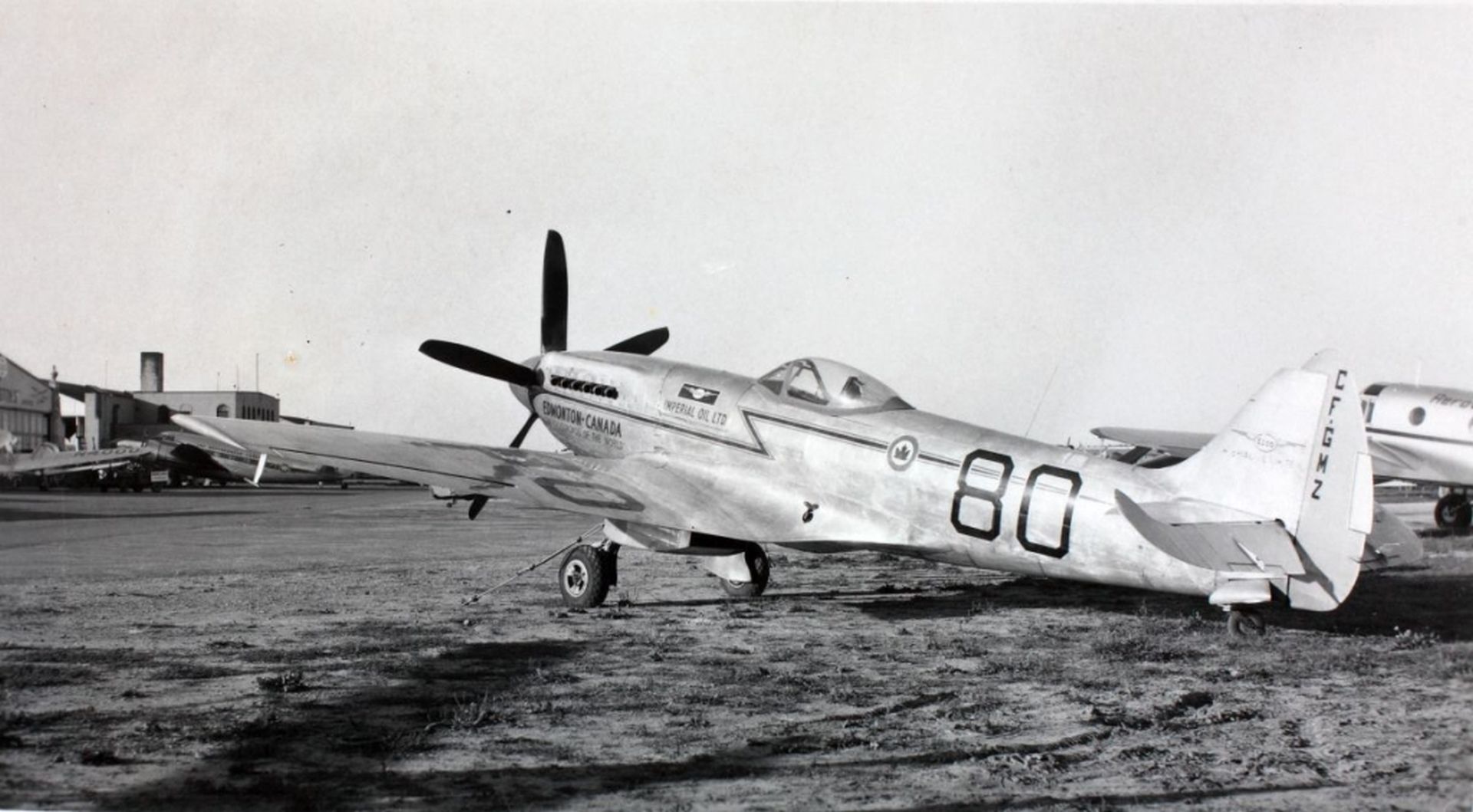
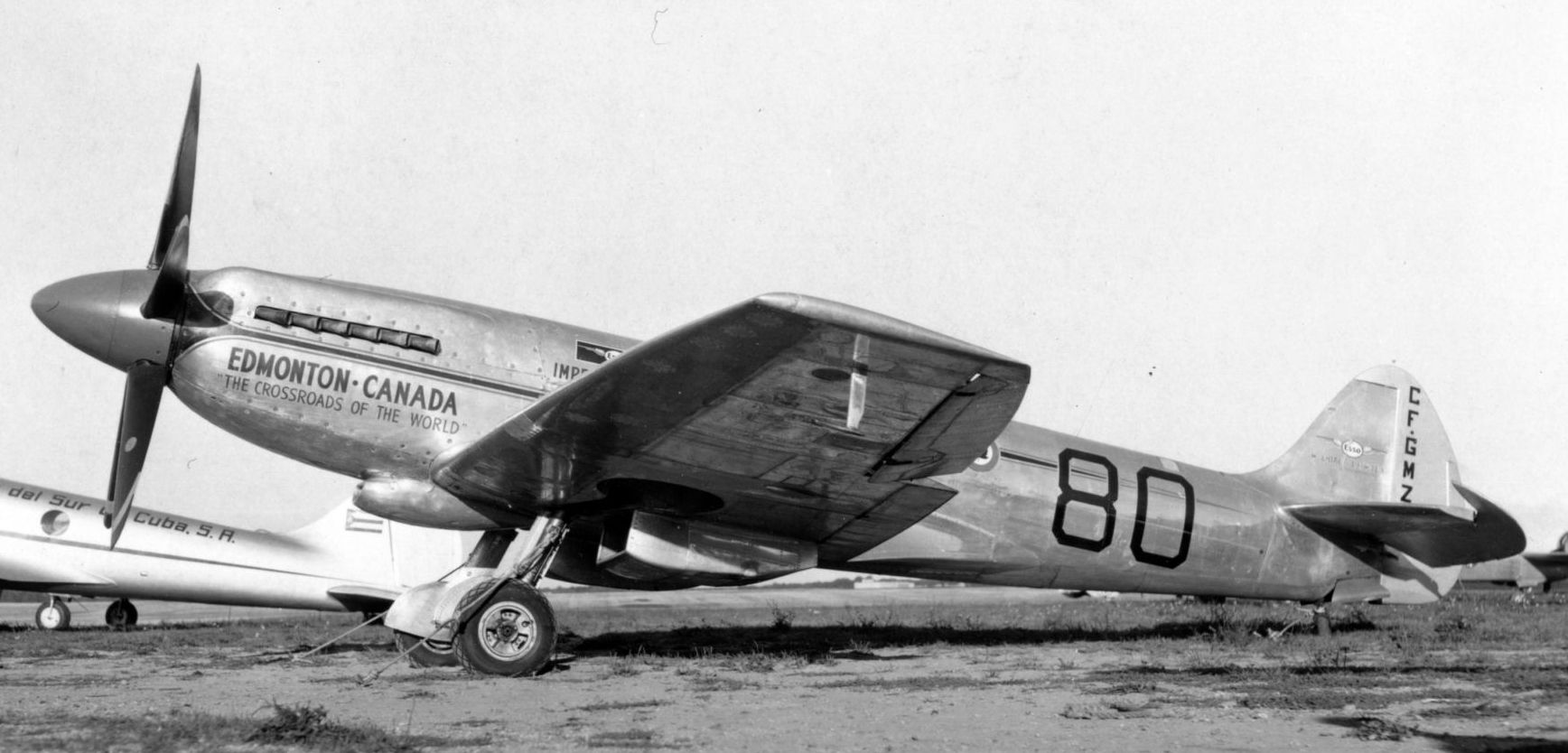
-
 Main AdminWeekend extra.
Main AdminWeekend extra.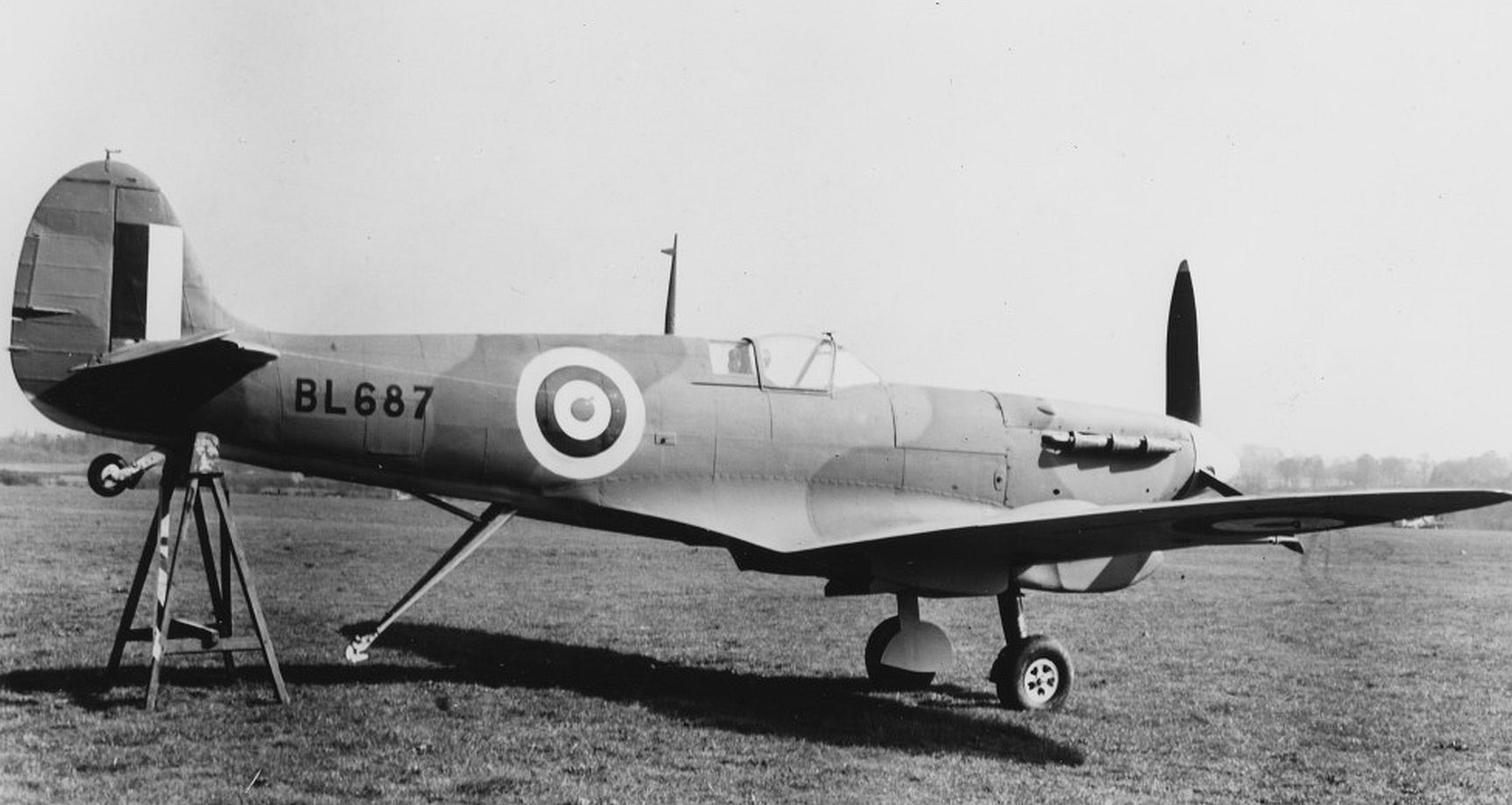
Supermarine Spitfire Mk Vb, BL687. A Spitfire VB transformed into a Seafire IB. BL687 has been equipped with an A-frame aresstor hook. This conversion took approximately 10,130 hours to complete, and it was not until 15 June 1942 that the first Seafire IB was taken on charge by the Royal Navy.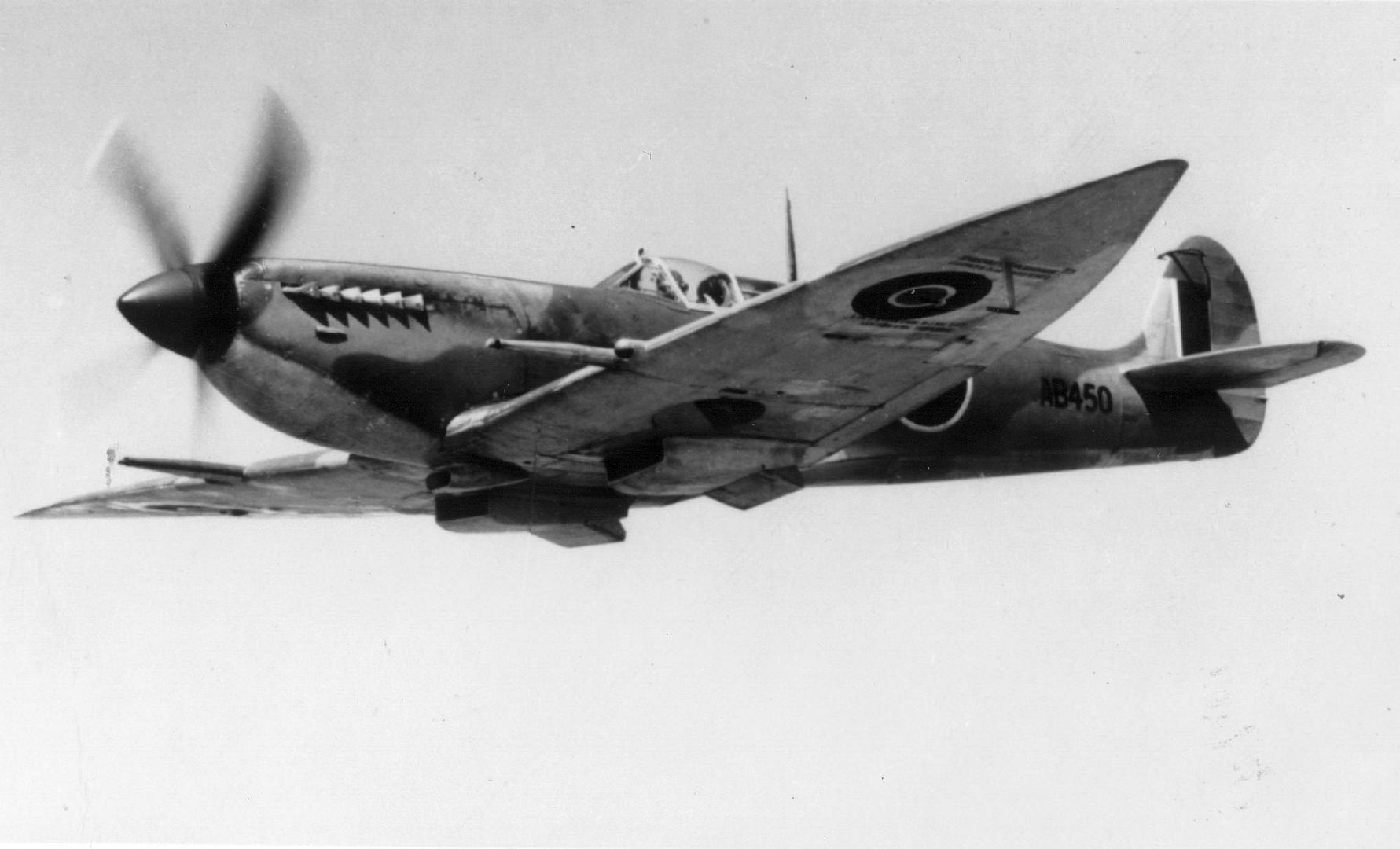
And a wonderful shot of the prototype Supermarine Spitfire Mk.VII, AB450. -
8 years agoSat Jan 28 2017, 07:06pm
 Main AdminWednesdays photo's.
Main AdminWednesdays photo's.
"PK312 was the first production Mk.22, differing from the Mk.21 by the cut-back rear fuselage and the tear-drop canopy and was delivered in March 1945 with the well-known standard tail. In late 1945, it was fitted with the enlarged egg-shape fin and rudder, and enlarged tailplane, that became standard on the production F.Mk.IX/F.Mk.22/F.Mk.24 aircraft of a batch of 800 Spitfires ordered from Vickers Armstrong at Castle Bromwich (contract B981687/39, serial range PK312-PL499). Of this order 231 F.Mk.22 were cancelled, the 569 eventually produced were 35 HF.Mk.IX, 247 LF.Mk.IX, 263 F.Mk.22 and 24 F.Mk.24."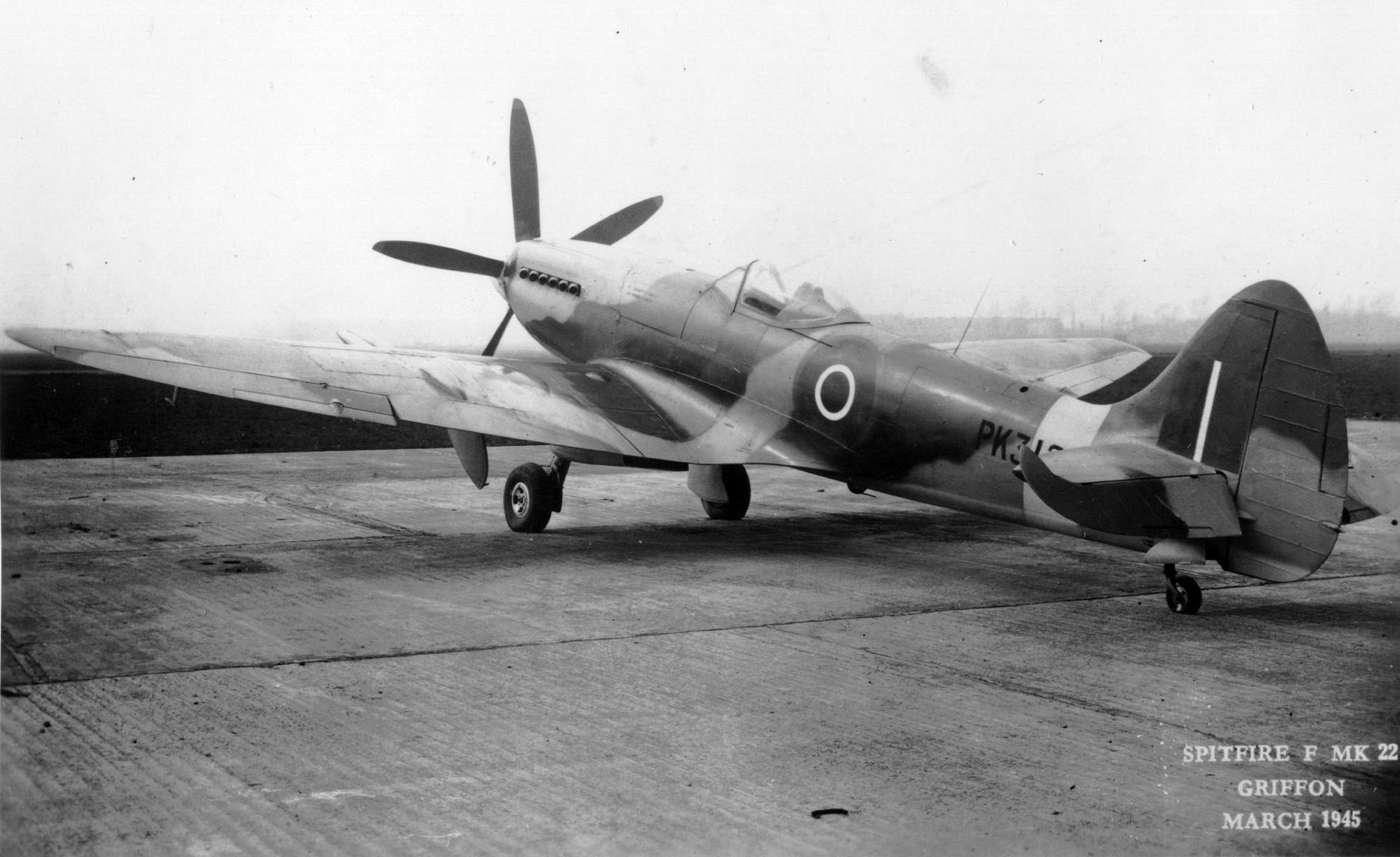
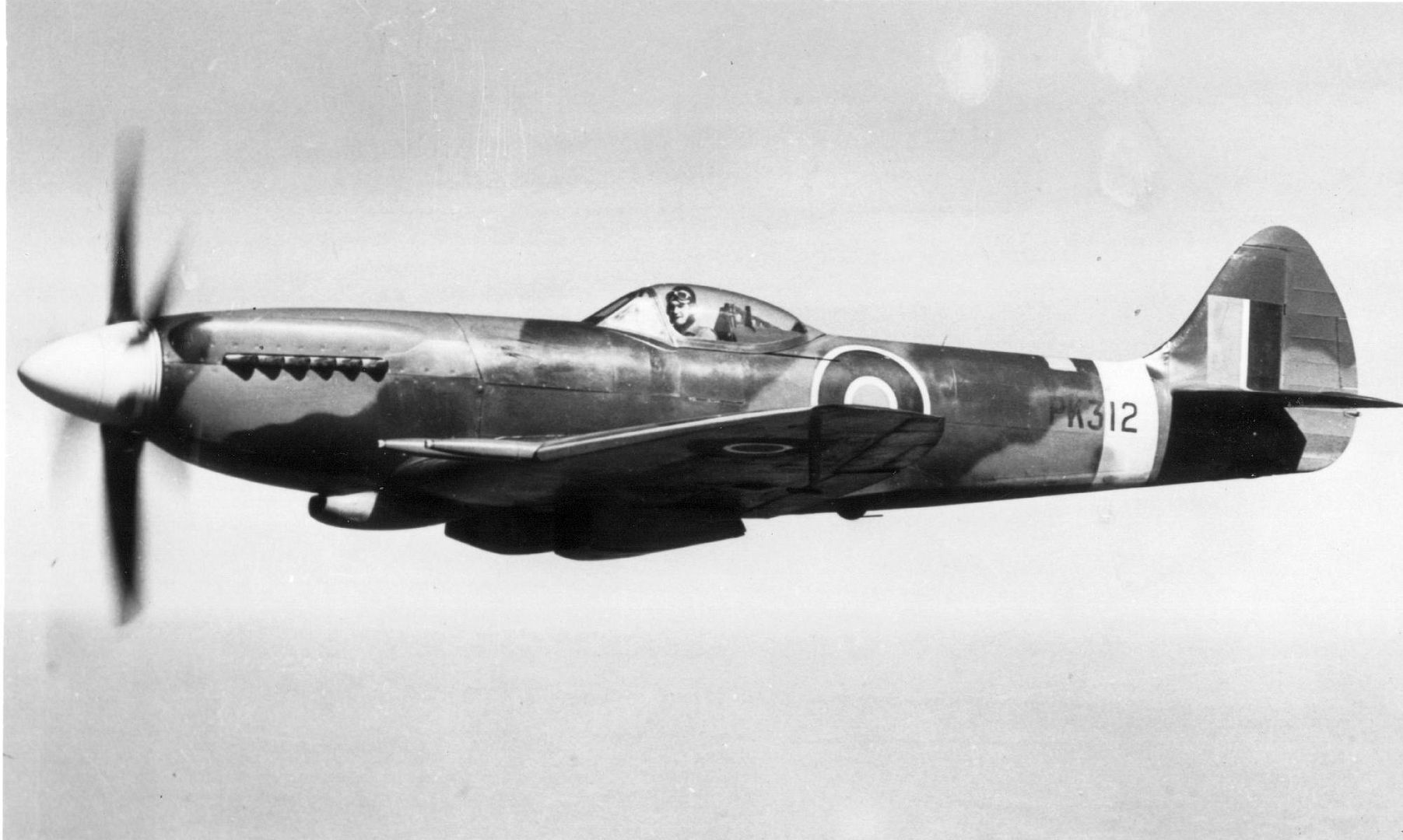
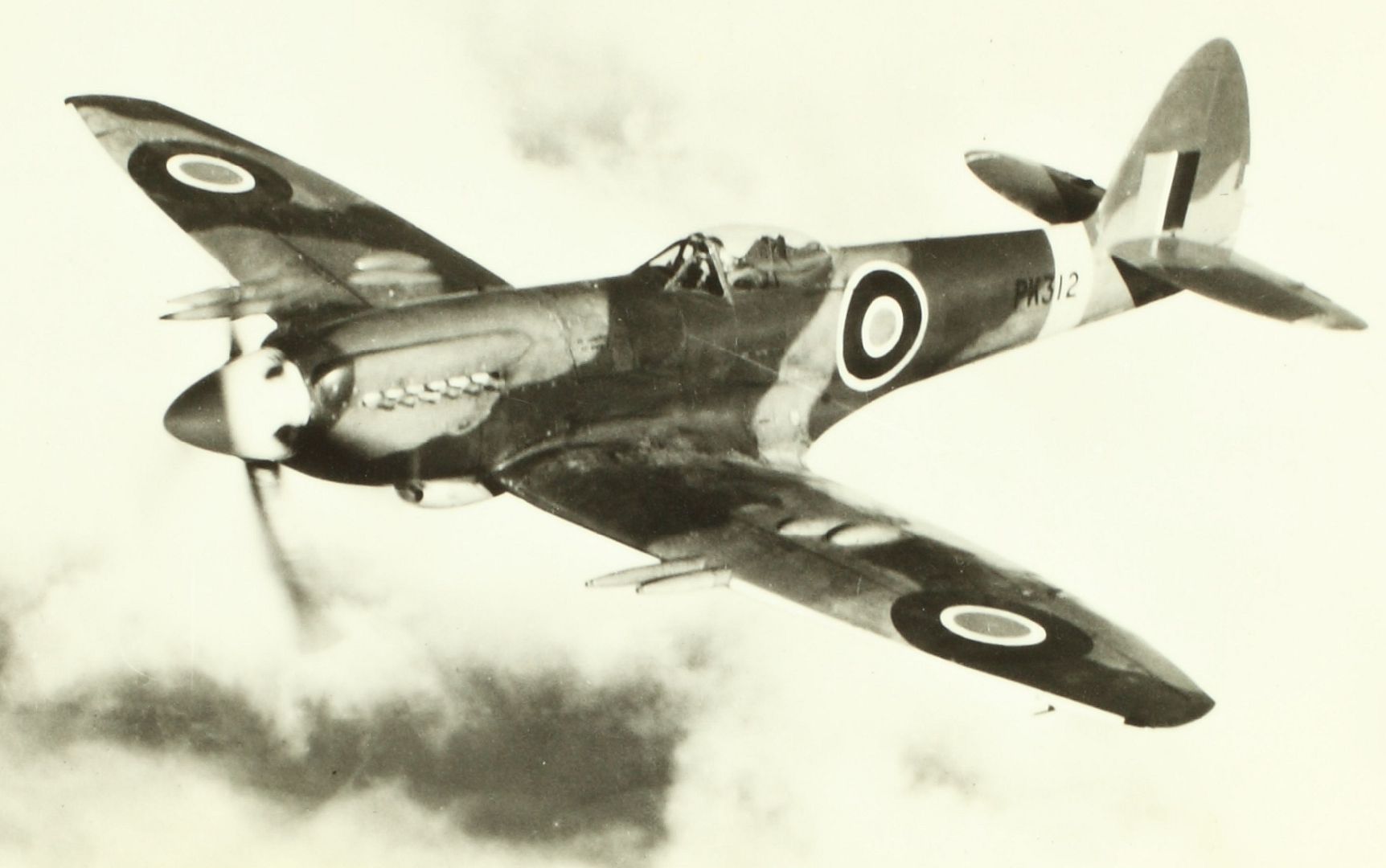
-
 Main AdminThe Seafire F. and F.R Mk. 45 was the next version of the Seafire to be built, and the first to use a Griffon 60 series engine with a two-stage, two speed supercharger. The prototype TM379 had been modified from a Spitfire F. Mk 21 prototype by Cunliffe-Owen and featured a "sting" type arrestor hook. Because this version was considered to be an "interim" type the wing, which was unchanged from that of the Spitfire 21, was non-folding. The Seafire F. Mk 45 entered service with 778 Squadron in November 1946 and a few were modified to F. R Mk 45s in March 1947 by being fitted with two F.24 cameras in the rear fuselage. Fifty F. Mk 45s were built by the Castle Bromwich factory.
Main AdminThe Seafire F. and F.R Mk. 45 was the next version of the Seafire to be built, and the first to use a Griffon 60 series engine with a two-stage, two speed supercharger. The prototype TM379 had been modified from a Spitfire F. Mk 21 prototype by Cunliffe-Owen and featured a "sting" type arrestor hook. Because this version was considered to be an "interim" type the wing, which was unchanged from that of the Spitfire 21, was non-folding. The Seafire F. Mk 45 entered service with 778 Squadron in November 1946 and a few were modified to F. R Mk 45s in March 1947 by being fitted with two F.24 cameras in the rear fuselage. Fifty F. Mk 45s were built by the Castle Bromwich factory.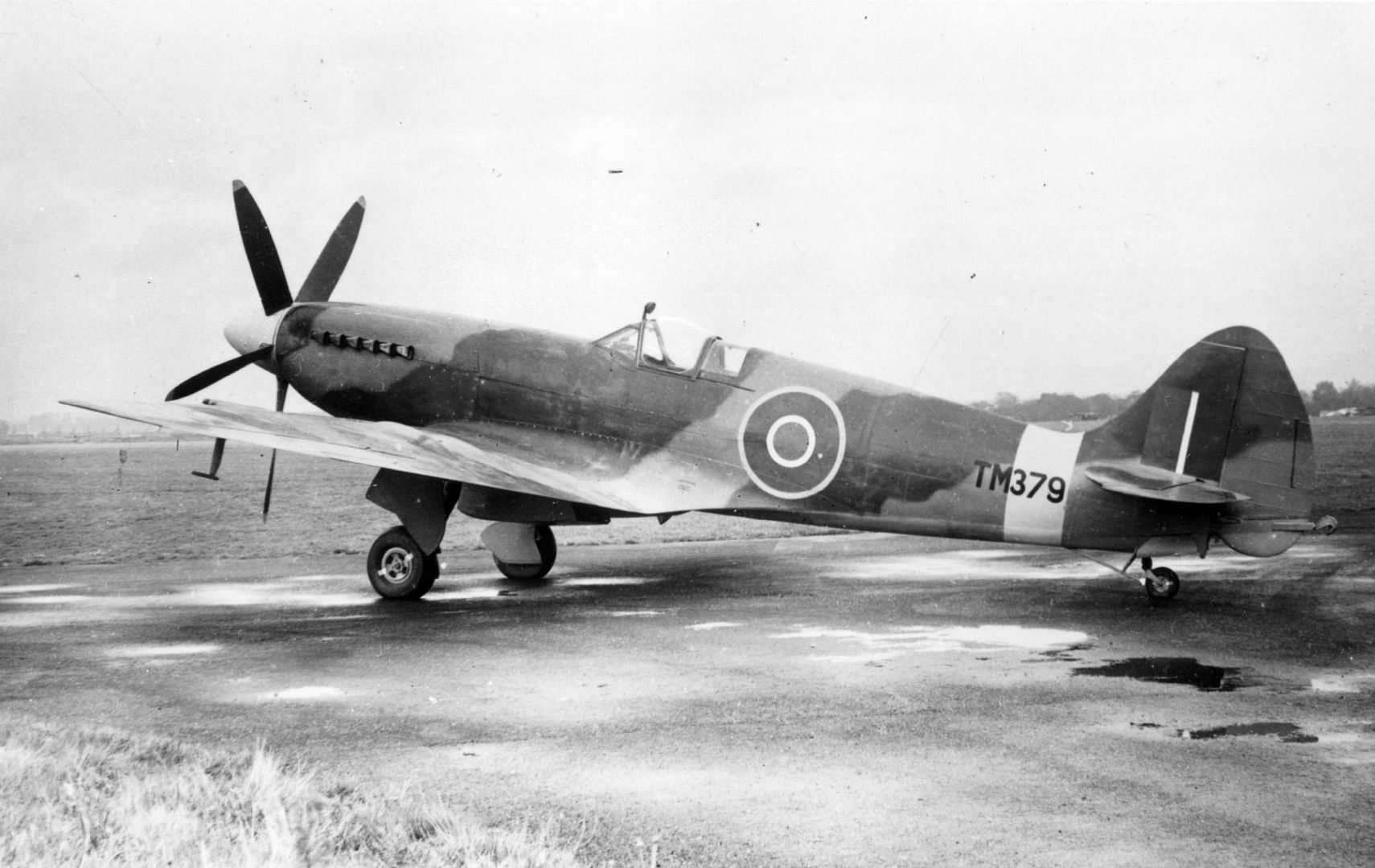

-
 Main Admin
Main Admin -
 Main Admin
Main Admin -
8 years agoSat Feb 04 2017, 01:16am
 Main Admin
Main Admin -
 Main Admin
Main Admin
Post a reply
- Go to Next topic
- Go to Welcome
- Go to Introduce Yourself
- Go to General Discussion
- Go to Screenshots, Images and Videos
- Go to Off topic
- Go to Works in Progress
- Go to Skinning Tips / Tutorials
- Go to Skin Requests
- Go to IJAAF Library
- Go to Luftwaffe Library
- Go to RAF Library
- Go to USAAF / USN Library
- Go to Misc Library
- Go to The Ops Room
- Go to Made in Germany
- Go to Campaigns and Missions
- Go to Works in Progress
- Go to Juri's Air-Raid Shelter
- Go to Campaigns and Missions
- Go to Works in Progress
- Go to Skinpacks
- Go to External Projects Discussion
- Go to Books & Resources
